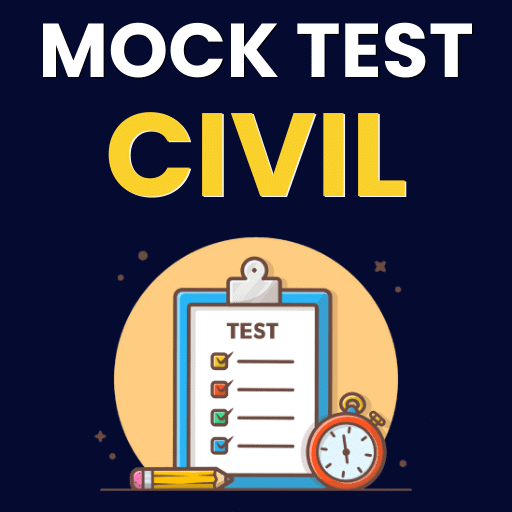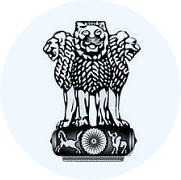NCERT Summary: New Empires and Kingdoms (Class 6) | History for UPSC CSE PDF Download
Prashastis and What They Tell Us?
- Samudragupta was a famous ruler from the Gupta dynasty.
- Information about Samudragupta is available from an inscription on the Ashokan pillar at Allahabad.
- The inscription was composed as a Kavya by Harishena, a poet and minister at Samudragupta's court.
- It is a special type of inscription called a prashasti, a Sanskrit word meaning 'in praise of'.
- Prashastis were composed for rulers like Gautamiputra Shri Satakarni but became more important during the Gupta period.
 The king who played the veena
The king who played the veena
Samudragupta’s Prashasti
- Samudragupta is described as a warrior, victorious king, learned, and the best of poets, even equal to the gods.
- Map details: Based on the prashasti, the map shows areas in green, red dots along the east coast, and areas in purple and blue.

Four Types of Rulers
Harishena explains Samudragupta's policies towards four different kinds of rulers.
- Aryavarta rulers: Nine rulers in the green area were uprooted, and their kingdoms became part of Samudragupta's empire.
- Dakshinapatha rulers: Twelve rulers, marked with red dots, surrendered, were defeated, and allowed to rule again by Samudragupta.
- Neighbouring states: States like Assam, coastal Bengal, Nepal, and gana sanghas in the northwest (purple area) brought tribute, followed orders, and attended Samudragupta's court.
- Outlying rulers: Kushanas and Shakas' descendants and the Sri Lankan ruler (blue area) submitted to Samudragupta and offered daughters in marriage.
Genealogies (Lists of Ancestors)
- Prashastis mention ruler's ancestors, including Samudragupta's great grandfather, grandfather, father, and mother.
 Samudragupta
Samudragupta
- Samudragupta's mother, Kumara devi, belonged to Lichchhavi gana and his father, Chandragupta, was the first Gupta ruler to adopt the title of maharajadhiraja.
- Great grandfather and grandfather were referred to as maha-rajas, signifying the family's rise to importance.
- Later rulers of the dynasty, such as Samudragupta's son Chandragupta II, included Samudragupta in their genealogies.
- Chandragupta II is known for his inscriptions, coins, and leading an expedition to western India, defeating the last of the Shakas.
- His court was believed to be filled with learned people.
Harshavardhana and the Harshacharita
While we can learn about the Gupta rulers from their inscriptions and coins, we can find out about some kings from biographies.
- Harshavardhana was a ruler 1400 years ago.
 Harshavardhana
Harshavardhana
- His biography, Harshacharita, was written by court poet Banabhatta in Sanskrit.
- Xuan Zang, a Chinese traveler, also provided a detailed account of Harsha's court.
- Harsha was not the eldest son but became king of Thanesar after the deaths of his father and elder brother.
- He then took over the kingdom of Kanauj following the death of his brother-in-law by the ruler of Bengal.
- Harsha led an army against the ruler of Bengal, who had killed his brother-in-law.
- He successfully conquered Magadha and possibly Bengal also.
- However, he was unable to cross the Narmada river to march into the Deccan because the Chalukya dynasty ruler Pulakeshin II stopped his advance.
The Pallavas, Chalukyas and Pulakeshin’s prashasti
- The Pallavas, and Chalukyas were significant ruling dynasties in south India during this period.
- Pallavas' kingdom spread around their capital, Kanchipuram to the Kaveri delta.
- Chalukyas' kingdom centered around the Raichur Doab, between the rivers Krishna and Tungabhadra.
Aihole - Chalukyas' Capital
- Important trading and religious centre with numerous temples.
- Pallavas and Chalukyas often raided each other's lands, attacking prosperous capital cities.
Pulakeshin II - The Best-Known Chalukya Ruler
- Information about him was obtained from a prashasti composed by his court poet Ravikirti.
- Ancestors traced back through four generations from father to son.
- Pulakeshin inherited the kingdom from his uncle.
- According to Ravikirti, he conducted expeditions along both the west and the east coasts.
- He checked the advance of Harsha, leading to a play on words in the poem.
- Harsha means happiness. The poet says that after this defeat, Harsha was no longer Harsha!
- He also attacked the Pallava king, who sought refuge behind the walls of Kanchipuram.
- The End of the Chalukya victory was short-lived.
- Both dynasties eventually replaced by the Rashtrakuta and Chola dynasties.
 |
Download the notes
NCERT Summary: New Empires and Kingdoms (Class 6)
|
Download as PDF |
How were these kingdoms administered?
- In the case of earlier kings, land revenue was significant, and the village was the primary administrative unit.
- There were also some new developments.
- Kings took various measures to gain the support of influential men, either economically, socially, or due to their political and military strength.
Example:
- Some crucial administrative positions became hereditary, meaning that sons inherited these positions from their fathers. For instance, the poet Harishena was a chief judicial officer, like his father.
- Occasionally, one person held multiple offices. For example, Harishena was not only a chief judicial officer but also an important minister and a minister of war and peace.
- Moreover, influential men likely had a say in local administration. These individuals included the city's chief banker or merchant, the leader of merchant caravans, the chief craftsman, and the head of the scribes.
These strategies were fairly effective, but eventually, some of these powerful individuals became strong enough to establish independent kingdoms.
A New Kind of Army
- These kings maintained a well-organised army consisting of elephants, chariots, cavalry, and foot soldiers.
- Military leaders, known as samantas, supported the king by providing troops when needed.
- Samantas did not receive regular salaries but were granted land instead.
- Revenue from the land was used to maintain soldiers, horses, and warfare equipment.
- When the ruler was weak, samantas attempted to gain independence.
Assemblies in Southern Kingdoms
The Pallavas inscriptions mention various local assemblies
- Sabha - assembly of brahmin landowners. It Functioned through sub-committees which Handled irrigation, agriculture, roads, and temple
- Ur - village assembly for non-brahmin landowners
- Nagaram - organisation of merchants
These Assemblies likely controlled by rich landowners and merchants. Many local assemblies continued for centuries.
Ordinary People in the Kingdoms
We can sometimes see glimpses of ordinary people's lives through plays and other accounts. Let's take a look at some of these:
- Kalidasa's plays provide a glimpse into the lives of ordinary people.
 Kalidasa
Kalidasa
- Kings and Brahmins speak Sanskrit, while others use Prakrit in his plays.
- 'Abhijnana Shakuntalam' is a famous play that tells the love story of King Dushyanta and Shakuntala.
- The play also highlights the plight of a poor fisherman.
- Chinese pilgrim Fa Xian observed the treatment of untouchables in society.
- Untouchables lived on the outskirts of the city.
- They struck a piece of wood when entering a town or market to maintain separation.
- People hearing the sound would avoid touching or brushing against them.
|
112 videos|560 docs|173 tests
|
FAQs on NCERT Summary: New Empires and Kingdoms (Class 6) - History for UPSC CSE
| 1. What is a prashasti and why is it important in studying ancient Indian history? |  |
| 2. Who was Samudragupta and what is notable about his prashasti? |  |
| 3. How did Harshavardhana's administration differ from that of the Gupta Empire? |  |
| 4. What roles did assemblies play in the administration of southern kingdoms, particularly under the Pallavas and Chalukyas? |  |
| 5. How did the ordinary people contribute to the functioning of the kingdoms during this period? |  |





























